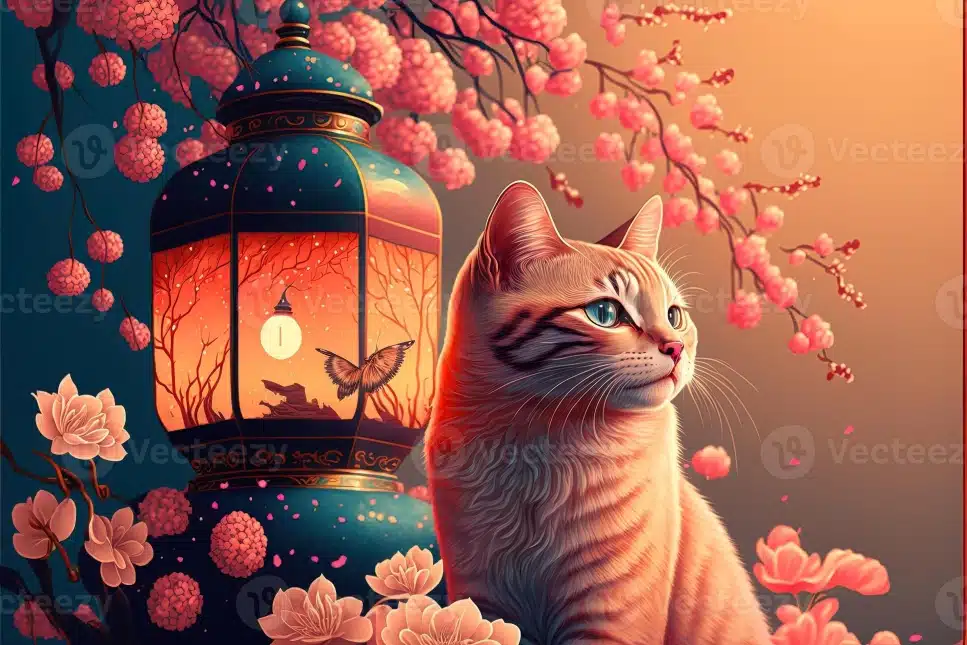Cats have captivated human imagination for thousands of years, inspiring artists, writers, and creators across cultures and eras. The Art:mfyjcu3hidu= Cat is a testament to the enduring allure of these enigmatic creatures, whose grace, independence, and mystery have made them a favorite subject in the world of art. This article delves into the rich history of cat-inspired art, explores its various forms and meanings, and examines why cats continue to be such a powerful muse for artists today.
The Historical Significance of Cats in Art
The relationship between humans and cats dates back to ancient civilizations, where cats were often revered and even deified. This reverence is evident in the art of the time, where cats are depicted in various forms, each representing different aspects of human culture and belief.
- Ancient Egypt: The Divine Feline Perhaps the most famous examples of cat art come from Ancient Egypt, where cats were considered sacred animals. The goddess Bastet, depicted as a lioness or a woman with the head of a lioness or domestic cat, was a symbol of home, fertility, and protection. Statues, amulets, and paintings of Bastet were widespread, and domestic cats were often depicted in the company of pharaohs and gods. Cats were so revered in Egypt that harming one, even accidentally, was punishable by death.
- Cats in Asian Art: Symbols of Good Fortune In Asian cultures, particularly in China and Japan, cats have been seen as symbols of good luck and protection. The Maneki-neko or “beckoning cat” is a famous Japanese figurine believed to bring good fortune to its owner. In Chinese art, cats are often depicted alongside symbols of prosperity and longevity, such as the peony flower or the crane. These representations emphasize the cat’s role as a guardian of wealth and a bringer of good luck.
- European Art: Cats as Companions and Mystics In medieval and Renaissance Europe, cats were often associated with both positive and negative qualities. While they were seen as symbols of independence and mystery, they were also linked to witchcraft and the supernatural. Despite this duality, many European artists, including Leonardo da Vinci and Albrecht Dürer, featured cats in their work. Da Vinci’s sketches, for example, capture the grace and agility of cats, while Dürer’s engravings often depict cats as symbols of domestic life.
The Evolution of Cat Art in Modern Times
As art movements evolved, so too did the depiction of cats. The modern era saw a diversification in the representation of cats, reflecting changes in artistic styles, societal attitudes, and cultural significance.
- Impressionism and Post-Impressionism: Cats in Everyday Life In the late 19th and early 20th centuries, artists associated with Impressionism and Post-Impressionism began to focus more on scenes of everyday life, where cats were often present as beloved pets. Pierre-Auguste Renoir and Édouard Manet are notable for their tender and intimate portrayals of cats. Renoir’s paintings often feature cats lounging in domestic settings, while Manet’s famous painting “Olympia” includes a black cat at the foot of the reclining nude, adding an element of mystery and sensuality to the scene.
- Surrealism: Cats as Symbols of the Unconscious The Surrealist movement, with its focus on the unconscious mind and dream imagery, found in cats a perfect symbol of the mysterious and the otherworldly. Salvador Dalí famously included cats in his surreal works, using their fluid, unpredictable movements to symbolize the irrational and the chaotic. In his painting “Dream Caused by the Flight of a Bee Around a Pomegranate a Second Before Awakening,” the presence of cats adds to the surreal and dreamlike quality of the composition.
- Contemporary Art: Cats as Cultural Icons In contemporary art, cats have become cultural icons, celebrated for their beauty, independence, and often humorous nature. Artists like Andy Warhol and Balthus have used cats as central figures in their work. Warhol, known for his fascination with celebrity and popular culture, produced a series of cat portraits that combine his signature pop art style with the elegance of feline forms. Balthus, on the other hand, often depicted cats in his enigmatic and sensual paintings, where they serve as both companions to the human figures and symbols of mystery.
The Symbolism of Cats in Art
The portrayal of cats in art goes beyond mere aesthetic appreciation; it is deeply rooted in symbolism and meaning. Cats represent a wide range of concepts and ideas, making them versatile subjects for artists.
- Independence and Mystery Cats are often seen as symbols of independence and mystery. Unlike dogs, which are traditionally viewed as loyal and obedient companions, cats are celebrated for their self-reliance and enigmatic nature. This quality has made them appealing subjects for artists who wish to explore themes of autonomy, freedom, and the unknown.
- Sensuality and Femininity Throughout history, cats have also been associated with sensuality and femininity. Their graceful movements, soft fur, and keen instincts have often been linked to the feminine form and essence. This symbolism is evident in works where cats are depicted alongside women, highlighting the connection between feline and female qualities.
- The Supernatural and the Occult Cats have long been associated with the supernatural and the occult, particularly in Western cultures. Their nocturnal habits, reflective eyes, and silent movements have contributed to their portrayal as mystical beings. In art, cats are sometimes depicted as companions to witches or as guardians of the underworld, symbolizing the link between the natural and the supernatural.
- Luck and Protection In many cultures, cats are seen as bringers of luck and protectors. This positive symbolism is reflected in artworks where cats are depicted alongside symbols of prosperity, such as coins, flowers, or other auspicious elements. The Maneki-neko, mentioned earlier, is a prime example of this symbolism in action.
The Enduring Appeal of Cats in Art
The fascination with cats in art shows no signs of waning. In fact, with the rise of digital art and social media, cats have become even more prominent in contemporary visual culture. The internet has given rise to countless cat memes, videos, and artworks, making felines some of the most popular and widely shared subjects online.
This enduring appeal can be attributed to the universal qualities that cats possess: their beauty, grace, independence, and mystery. These qualities resonate with people across cultures and generations, ensuring that cats will continue to inspire artists for years to come.
Conclusion: The Art of the Cat in Modern Culture
The art of the cat is a celebration of one of nature’s most fascinating creatures. From ancient Egypt to the modern internet, cats have captivated the human imagination, inspiring countless works of art that reflect their complex and multifaceted nature. Whether as symbols of mystery, independence, sensuality, or luck, cats have left an indelible mark on the world of art.
As we continue to explore new forms of expression and creativity, it is likely that cats will remain a beloved subject for artists, both professional and amateur alike. Their timeless appeal ensures that the art of the cat will endure, evolving with the times but always retaining its unique charm and allure.

